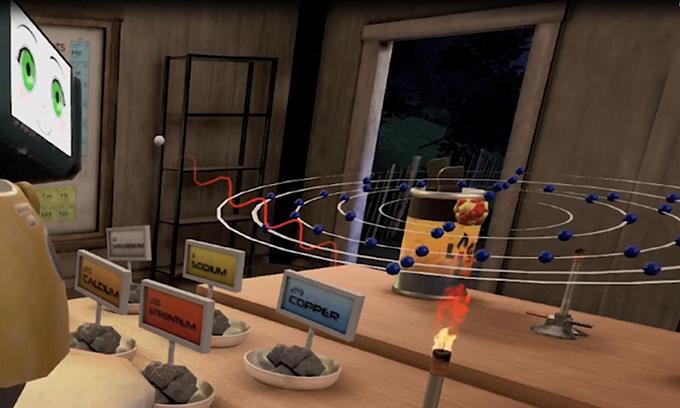revolutionizing Education: how Immersive Learning with VR/AR is Shaping the Future of Teaching
Immersive learning using Virtual Reality (VR) and Augmented Reality (AR) is not just a futuristic concept—it’s a growing reality that’s transforming classrooms worldwide. By merging technology and pedagogy, educators and students are experiencing the next wave in interactive, personalized, and impactful education.
Introduction: The Dawn of Immersive Learning
Education is undergoing an unprecedented transformation. Traditional lectures and textbooks are giving way to active,participatory,and experiential models of learning. At the forefront of this evolution are immersive technologies—Virtual Reality (VR) and Augmented Reality (AR)—which transport students beyond the four walls of the classroom and into interactive 3D worlds. This article explores how immersive learning with VR and AR is revolutionizing education, why educators and institutions are embracing these tools, and what the future holds for immersive education.
What is Immersive Learning?
Immersive learning leverages digitally created environments and experiences to engage students in active, first-hand learning. Using VR, students can explore environments or else unachievable or impractical to visit—think ancient civilizations or the solar system. With AR, digital information and objects are overlaid onto the real world through devices like tablets or AR glasses, making learning dynamic and contextually relevant.
- Virtual Reality (VR): Complete immersion in digital environments via VR headsets (e.g., Oculus Rift, Meta quest).
- Augmented Reality (AR): Enhances the real-world setting with digital overlays using smartphones, tablets, or AR glasses (e.g., Microsoft HoloLens, Apple Vision Pro).
Key Benefits of VR/AR in Education
- 1. Enhanced Engagement: Immersive content makes lessons captivating, interactive, and memorable.
- 2. Improved Retention: Active participation strengthens concept retention, as students learn by doing rather of passively receiving information.
- 3. safe Practice Spaces: VR/AR offers risk-free environments for practicing hands-on skills, such as science experiments or medical procedures.
- 4. Equal Access to Experiences: Students from all backgrounds can explore places or scenarios otherwise beyond their reach or resources.
- 5. Personalized Learning: Immersive platforms can adapt to individual students’ pace, learning styles, and needs.
How Immersive Learning with VR/AR is Shaping the Future of Teaching
Transforming the Educator’s Role
Teachers are evolving from content deliverers to facilitators and guides, curating immersive experiences that foster inquiry, collaboration, and critical thinking. VR and AR empower teachers to:
- Design and lead virtual field trips to historical sites, museums, and scientific landmarks.
- Create personalized learning pathways tailored to students’ strengths and interests.
- Facilitate real-time interaction and assessment within immersive environments.
Enabling New Models of Collaborative Learning
Immersive virtual classrooms allow students from different locations to interact, collaborate, and solve problems together in shared digital spaces. For example,students can:
- Work in teams to solve virtual escape room challenges themed around STEM concepts.
- Collaborate on 3D modeling projects or conduct group experiments.
- practice language skills with peers from around the world in virtual conversation hubs.
The Impact of VR/AR Immersive Learning: Case Studies
Stanford University: VR in Medical Training
Stanford has integrated VR simulation labs to teach complex surgical procedures. Medical students can practice in realistic 3D environments, improving their precision and confidence while reducing costs and risks associated with traditional cadavers.
ClassVR: Transforming K-12 Classrooms
Schools worldwide are adopting ClassVR, a platform delivering curriculum-aligned VR lessons. Students have explored ancient Rome, dived into ocean ecosystems, and dissected virtual frogs—all within engaging, interactive environments.
Mondly: Immersive Language Learning
The Mondly VR/AR app brings language lessons to life,allowing users to converse with virtual characters and explore real-world scenarios,dramatically improving speaking confidence and listening comprehension.
First-Hand Experiences: Educators and Students Speak
“Exploring the inside of a human heart in VR was a game-changer for my biology students. Their excitement and questions skyrocketed—they finally ‘saw’ what I had been describing for years.”
– Rachel P., High School Science Teacher
“with AR, math came alive for me.I could move shapes around and solve puzzles on my desk. It made learning fun and helped me really understand the concepts.”
– Jordan L., 6th Grade Student
Practical Tips for Integrating VR & AR in the Classroom
- Start Small: Pilot a single VR/AR lesson to assess engagement and learning outcomes before larger rollouts.
- Leverage Free Resources: Platforms like Google expeditions, Unimersiv, and Merge EDU offer affordable or free immersive experiences.
- Invest in Training: Provide professional advancement for educators to maximize the effective use of immersive tools.
- Ensure Accessibility: Consider student needs and ensure devices and experiences are accessible to all.
- Encourage collaboration: Use immersive tools to foster teamwork, dialog, and creative problem-solving.
Addressing Challenges and Maximizing the Potential
While immersive learning offers unparalleled benefits, challenges remain—including device costs, technical support, and ensuring content aligns with curriculum standards.However, as technology evolves and becomes more affordable, barriers are steadily falling. To make the most of VR/AR in education:
- Plan for phased adoption and update technology infrastructure as resources allow.
- Partner with edtech companies for customized, high-quality content development.
- Establish clear objectives and evaluation metrics to measure effectiveness.
The Future of Immersive Learning in Education
the future of education is undoubtedly immersive.Over the next decade, VR/AR-powered classrooms will become mainstream, enabling hyper-personalized, student-centered, and competency-based learning. Artificial intelligence, haptic feedback, and real-time analytics will further refine how teachers teach and students learn.
Imagine a high school student exploring the Amazon rainforest alongside indigenous guides,or a medical resident practicing rare surgeries under virtual expert supervision. Immersive learning is not just a trend—it’s a paradigm shift that’s making learning prospect-rich, accessible, and infinitely engaging.
Conclusion
immersive learning with VR/AR is revolutionizing the educational landscape. By bridging the gap between theory and practice, and igniting students’ curiosity and engagement, these tools are shaping the future of teaching and learning. Whether you’re an educator, policymaker, parent, or student, now is the time to embrace immersive education as a cornerstone of future-ready learning.
Explore, experiment, and step boldly into the world of VR/AR education—there’s a universe to discover!

